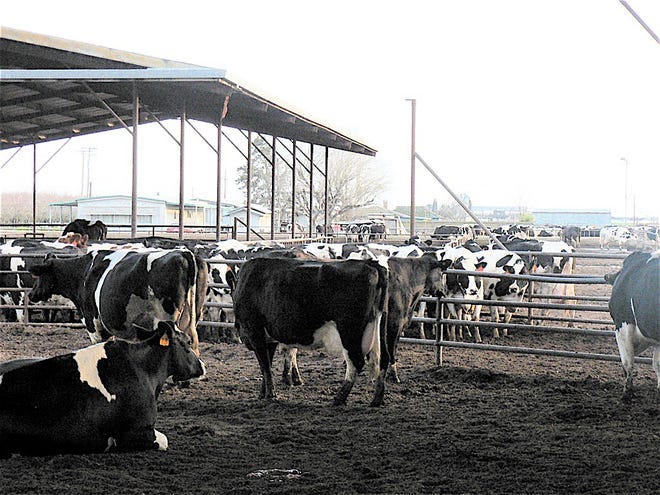Yes, California has milked cows for a long time

Recently, a reader of this column, Dean, called with a question: How could he get old copies of the column, especially those relating to dairying in California? I didn’t have a good answer other than that I have copies in my computer but don’t have a fast way to retrieve them, and there have been quite a few over the years.
While talking with Dean, an idea came to me: Why not write a bit of the history of California dairying – something I’ve never done? Columns I have written go back only to about the mid-1970s, when I made my first visit to California and its already huge dairy industry. Certainly there must have been cows there long before.

The first cows of California
Cattle first entered California with the Spanish missionaries in the late 1700s. In the first few decades after the arrival of cattle in California, dairying was incidental to the more lucrative tallow and hide trades. But as the herds grew stronger and larger, dairying became more popular.
A Russian settlement at Fort Ross on the Sonoma coast milked cows and shipped butter and cheese to fur-trapping settlements in Alaska between 1812 and 1841. After the Russians left California in 1841, John Sutter of Sacramento acquired the small dairy herd and operated small dairies on land in Mills Station and Yuba City. But until the great influx of fortune seekers in the 1850s following the discovery of gold in California, dairying in the state was still primarily a domestic activity.

Cows came west and herds grew
Many families who braved the trek from the eastern US brought cows to provide milk for their children. In the mining communities, dairy cattle soon became a valuable commodity. Often while husbands were mining, wives managed the family’s livestock and found that they could sell fresh milk and butter at a favorable price. Dairy herds began appearing in the Sierra Foothills to satisfy the Easterners’ desire for the milk and butter that they had left behind.

Initially, milk had to be produced within a short wagon ride of its consumers. Larger dairy herds first emerged close to California’s most populated areas and growing urban populations. According to the 1860 census, there were 264,000 people in California and 104,000 cows, and the principal dairy regions were the San Francisco Bay area and the Sacramento Valley.
Meanwhile to the south, Los Angeles was experiencing rapid growth with the “oil boom” and rise of the movie industry. Dairying was scattered in many close-by regions. Many dairy regions that served the Los Angeles area in the early 1950s to mid-1960s are long gone, the result of conversion of dairy land to more urban-oriented land uses. Three such areas – Cypress, Dairyland and Dairy Valley – incorporated in an effort to forestall encroaching urbanization and to preserve the land for dairying.
When these areas incorporated in the mid-1950s, nearly all of their land uses were associated with dairying. However, by the late 1960s, much of this dairying activity, along with most other agriculture, was eliminated by booming development.

Looking eastward for expansion
Meanwhile, the dairy farmers, most of whom were Dutch and Portuguese people who came to the US after World War II or whose ancestors came to America from Holland or the Azores during the early 1900s, were looking east toward the Chino, Ontario and San Bernardino areas to buy land for new dairies.
The Chino Valley, often referred to as a “desert,” was actually a prominent farming area. In 1917, the sugar beet factory in Chino shut down, but new opportunities arose in the canning industry, and soon Chino was a leader in agricultural production, including dairying. By 1926, Chino dairymen were already receiving high honors in the state and nation for milk production and had established the area as a good place to milk cows.
Twenty-five new dairies were built in the city from 1954 to 1955 as a result largely of the flight of greater Los Angeles dairymen. The city also eased the way for dairymen by forming the Dairy Preserve. The region’s milk profits were increasing as more and more dairymen sold their property in Los Angeles County and moved into the Chino Valley.

Chino dairying was also aided by innovations like the smaller parlor type barn and dry lot operation, which improved milk production. The number of dairies greatly increased in the early 1960s with 172 dairies built in 1960, and by the mid-1970s there were some 350 dairies and 300,00 cows in the valley. The Chino Valley became the most concentrated and highest milk production area in the US and, in 1993, California surpassed Wisconsin as the highest milk producing state, a situation that remains today.
We’ll continue the story next week.
John Oncken is the owner of Oncken Communications. He can be reached at 608-837-7406 or email him at jfodairy2@gmail.com.